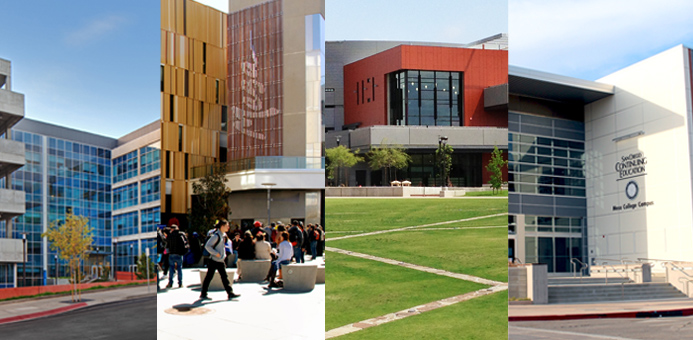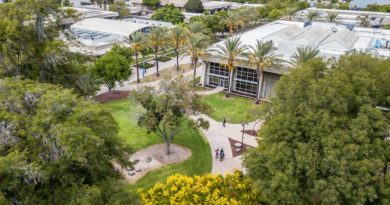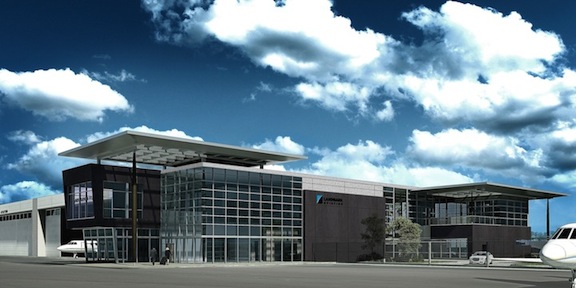Daily Business Report-Nov. 20, 2014
The San Diego Community College District is seeking to offer a pilot program to award bachelor’s degrees in Health Information Management. It is the second-largest community college district in California and one of four districts in San Diego County that want to offer bachelor’s degrees
Four Community College Districts in County
Signal Desire to Offer Bachelor’s Degrees
Four community college districts in San Diego County have notified the state Chancellor’s Office that they want to host a pilot program to award bachelor’s degrees to students under legislation signed by Gov. Jerry Brown this fall.
The districts are San Diego CCD, Southwestern CCD, Mira Costa CCD and Grossmont-Cuyamaca CCD. They are among 36 districts — half of all districts in the state — that submitted letters of intent indicating their desire to host a baccalaureate degree program.
The legislation — Senate Bill 850 and authored by Sen. Marty Block (D-San Diego) — allows up to 15 districts to establish a pilot baccalaureate degree program at one of their colleges in a field of study not offered by the California State University or University of California. Lower-division coursework would cost $46 and upper-division coursework would cost $84 under the new program, with an estimated total cost of about $10,000 to obtain a bachelor’s degree.
San Diego Community College District wants to offer bachelor’s degrees in Health Information Management as part of the program. Southwestern wants to offer Allied Health degrees, Mira Costa, Biomanufacturing, and Grossmont-Cuyamaca, Environmental Health & Safety Management.
“The districts’ strong interest in building baccalaureate degree programs is heartening,” said California Community Colleges Chancellor Brice W. Harris. “They are pioneering a new mission for the California Community Colleges and opening up pathways for Californians who may not have had the chance to earn a four-year degree.”
“Students now have another door that can lead to a quality, affordable four-year degree, said Block. “It tells employers that California is doing all it can to ensure that our state is open for business and will stay open to employers looking for highly trained employees.”
The thirty-six districts seek to build baccalaureate degree programs in a wide variety of diverse vocational fields, ranging from airframe manufacturing technology, biomanufacturing, respiratory therapy, dental hygiene, engineering technology, and public safety administration. Many of the proposed programs are in fields where graduates with associate degrees can already expect to earn $60,000 a few years after graduation, making them very cost-effective.

Comet Supercomputer Set for Launch
At San Diego Supercomputer Center
The San Diego Supercomputer Center (SDSC) at UC San Diego is preparing for the arrival of Comet, a new petascale supercomputer designed to transform advanced scientific computing by expanding access and capacity among traditional and nontraditional research domains.
Production for Comet is sponsored by a $21.6 million National Science Foundation Award, and is scheduled for early 2015, with a formal launch in the spring.
Comet will be capable of an overall peak performance of two “petaflops,” or two quadrillion operations per second. It will join the Supercomputer Center’s Gordon supercomputer as another resource in its Extreme Science and Engineering Discovery Environment program.
“Comet is really all about providing high-performance computing to a much larger research community — what we call ‘HPC for the 99 percent’ — and serving as a gateway to discovery,” said center director Michael Norman, the project’s principal investigator. “Comet has been specifically configured to meet the needs of underserved researchers in domains that have not traditionally relied on supercomputers to help solve problems, as opposed to the way such systems have historically been used.”
Comet will be the successor to the center’s Trestles computer cluster, to be decommissioned when Comet comes only.
“Think of Comet as our Trestles cluster on steroids,” said center deputy director Richard Moore, a co-principal investigator of the Comet project. “It will have all of the features that made Trestles popular with users, but with significantly more capacity to appeal to a broader base of researchers, while providing ease-of-access and minimal wait times.”
Port Considering Expansion of Homelessness Outreach
The Port of San Diego said it will consider the expansion of its homelessness outreach with two programs after the initial success of efforts to help people living on the streets.
The Port has partnered with the Alpha Project since January 2014 to conduct interviews and assess the homeless population on the Port’s waterfront, known as the tidelands. The Alpha Project staff acts as case workers who guide people who are homeless to available services in the region.
From Jan. 1 to Aug. 31 of this year, people living along the waterfront were contacted 943 times. Alpha Project staff provided nearly half of them with offers for water, blankets, placement at a shelter or other services.
There were 138 men and 40 women who agreed to shelter placement during that time period.
Port staff is researching whether to expand the port’s participation in a program led by the Downtown San Diego Partnership to install “donation stations,” similar in appearance to parking meters. The program, Donation Stations/Make Change Count, is intended to help discourage panhandling and raise funds for programs.
In the past two years, the Port has installed four of the donation stations on the waterfront, where people can redirect money they may have given to panhandlers to support homeless outreach projects.
Two Marijuana Dispensaries Ordered Closed
The City Attorney’s Office obtained court orders on Wednesday to close two more marijuana dispensaries operating in violation of San Diego zoning regulations. The unpermitted dispensaries are four miles apart on El Cajon Boulevard, one in North Park and the other in the College Area. Superior Court Judge Ronald S. Prager gave the operators 24 hours to shut down the dispensaries.
The two dispensaries ordered closed today were:
• Green Urban Association, 3140 El Cajon Blvd. in North Park. Defendants were the property owner, El Cajon Estates LLC; Mark Perecman and Seymour L. Weksler, officers and principals of El Cajon Estates LLC; Green Urban Association; Chi Huynh, the chief executive officer of Green Urban Association; and Donna B. Duong, who is identified in the property lease as the tenant.
• The Bakery Collective, 6559 El Cajon Blvd. in College Area. Defendant was the operator, Long Truong, also known as Calvin Truong. Last week, the city settled with the property owners, Stephanie K. Leiter, Fabio Pasquesi and the 2202-2204 Bristol Street Corp. They are permanently enjoined from maintaining any unpermitted use, including a dispensary anywhere in the city, and paid $600 in investigative costs and $3,000 in civil penalties with an additional $22,000 in penalties suspended.
Both dispensaries are in zones where medical marijuana cooperatives are not permitted by city ordinance.
Women’s Empowerment International Honored
San Diego’s Women’s Empowerment International (WE) was named a recipient of the 2014 Freedoms Foundation George Washington Honor Medal as part of its National Awards program. WE was awarded the medal for its program to provide microloans to women in poverty and help them become self-sufficient entrepreneurs.
WE was nominated under the category of Community: Adult and Youth, for programs by groups or individual who “go above and beyond the call of duty” on a local, regional, or national level which promote good works and serve their communities on an ongoing, day-to-day basis.
Since its founding in December 2003 by three local women — Win Cox, Leigh Fenly and Jan Percival — WE has provided over $900,000 of microloans to over 15,000 women in Honduras, Ghana, Uganda, Mexico, Benin and San Diego.
Since 2006, the WE Center for STAR (support, training, and assistance to refugees), has provided loans, grants and business training to San Diego’s large population of refugee women, enabling them to start or expand their small businesses to provide income for their families and gain independence and confidence in themselves.
Deadline Approaches for Filing
Property Tax Assessment Appeals
San Diego County homeowners have only a few days left to file property tax assessment appeals for fiscal year 2014-2015. Residents can appeal if they feel the value of their property as determined by the county assessor exceeds the market value. The filing period for an appeals application ends Monday, Dec. 1. Applications must be received by the Clerk of the Board of Supervisors office no later than 5 p.m. or postmarked by 11:59 p.m. that day.
Those filing will need to include their parcel or tax bill number, property address and their opinion of the property’s market value on the application.
The application, information booklets, a step-by-step guide, a video explaining the assessment appeals process and other resources are available on the Clerk of the Board of Supervisors website. Residents may also pick up applications and booklets in person and speak with staff at the Clerk of the Board’s office in the County Administration Center at 1600 Pacific Highway in Room 402 in San Diego. You can call the office at (619) 531-5777.
UC Regents Committee OKs Tuition Hike
Tuition at UC San Diego and other UC campuses across the state would increase by 5 percent a year over the next five years under a proposal approved Wednesday by a University of California Board of Regents committee. The full board is expected to consider the proposal today. The voice vote by members of the Regents’ Committee on Long Range Planning was virtually drowned out by protesters who were chanting inside the meeting room at UC San Francisco.
Several board members spoke against the tuition hike. Others said that while they don’t want to raise students’ costs, the UC has no choice due to a shortage of funding from the state. Regent Sherry Lansing said she was “saddened” at having to vote for a tuition hike, particularly following the 2012 passage of Proposition 30, an education sales tax.
“When this board unanimously supported Proposition 30, when the students unanimously came out along with the alumni and faculty, it was with the complete understanding that a huge percentage of this money for Prop 30 would fully fund the university so we can continue with our enrollment growth,” she said. “Sadly, that has not happened.”
Gov. Jerry Brown, who opposed the tuition hike and called for the creation of a state-UC committee to examine ways of reducing students’ costs, told the board money from Prop 30 is coming in.
“It may not be as much as you want, but it’s real money,” he said. “Without it we’d be in real trouble.”
— City News Service

Museum of Contemporary Art San Diego
Planning to Expand its Exhibit Space
The Museum of Contemporary Art San Diego in La Jolla is planning to expand its museum space to make room for more art. The museum’s current building is big enough to exhibit 50-75 works of art. Close to 4,000 pieces in the museum’s permanent collection sit in storage vaults. The proposed expansion would triple the exhibition space to 30,000 square feet.
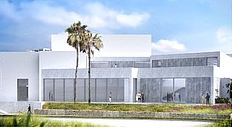
The firm chosen to design the expansion, Selldorf Architects, is led by German-born, New York resident Annabelle Selldorf, who was in town this week to meet with museum staff and give a lecture about her work.
Selldorf has an impressive client list in contemporary art circles, having designed spaces for some of the world’s leading gallery owners, collectors, and cultural institutions. She designed a space for New York gallery owner David Zwirner and a studio for artist Jeff Koons.
“Looking at art is very immersive,” said Selldorf sitting in the ocean-front boardroom at MCASD. “I’m interested in making spaces that have a contemplative quality about them.”
She says her goal is to create public spaces that people want to be in. She plans to make the existing museum building “kinder.” One example is her design for the entrance. Right now, the way in can be difficult to find.
“We’re going to give the museum a new entrance, so when you come from La Jolla, the building presents itself proud, confident, elegant, and welcoming,” said Selldorf.
— KPBS

SeaPort Airlines to Offer Direct Flights From
San Diego to San Felipe, Baja California
SeaPort Airlines will begin direct flights from San Diego International Airport to San Felipe in Baja California on Dec. 15. The service also will provide access to San Felipe from Los Angeles via a convenient connection at San Diego with SeaPort’s nonstop flights to Burbank Bob Hope Airport.
As Baja California’s only scheduled airline service, this also will be the first international destination for SeaPort Airlines, expanding upon its current network of 23 airports across nine states. The new route will initially operate four times each week on Monday, Thursday, Saturday and Sunday, with nine-passenger Cessna Caravan aircraft making one roundtrip flight per day. Flights will depart from San Diego at 9:15 a.m. and arrive in San Felipe approximately 10:35 a.m., with a return flight to San Diego departing at 11:30 p.m. and arriving at approximately 12:50 p.m.
Flights are available for sale at www.seaportairlines.com or by calling (888) 573-2767.
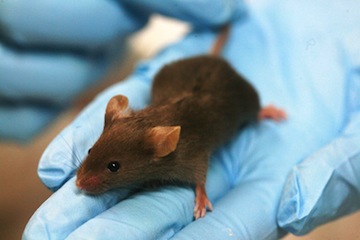
The End of the Laboratory Rat?
For more than a century, the laboratory mouse (Mus musculus) has stood in for humans in experiments ranging from deciphering disease and brain function to explaining social behaviors and the nature of obesity. The small rodent has proven to be an indispensable biological tool, the basis for decades of profound scientific discovery and medical progress.
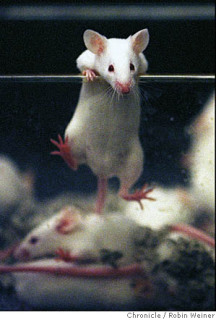
But in new findings published online Nov. 19 in the journal Nature, researchers at the UC San Diego School of Medicine and Ludwig Cancer Research, with colleagues across the country and world, have discovered that a significant number of mouse genes do not in fact behave like their human counterparts, suggesting science will need to rethink at least some roles of the lab mouse as a model organism.
“The assumption has long been that whatever was discovered in the mouse would likely be true in humans too, but the idea has never been systematically evaluated and assessed,” said Bing Ren, professor in the Department of Cellular and Molecular Medicine, head of the Laboratory of Gene Regulation at the Ludwig Institute for Cancer Research at UC San Diego and one of the paper’s senior authors.
“We know now that this assumption is not entirely true. There are a substantial number of mouse genes that are regulated in ways different from similar genes in humans. The differences are not random. They are clustered along certain pathways, such as in genes regulating the immune system.”
Researchers said the mouse is not our closest genetic cousin. Only half of human genomic DNA aligns to mouse genomic DNA. Chimpanzees, by comparison, match 96 percent. But protein-coding genes, which provide the actionable instructions to build a living organism, are more strongly conserved across the two species. Mice and humans share approximately 70 percent of the same protein-coding gene sequences, though these genes constitute just 1.5 percent of their respective genomes.
City Needs to Raise Taxes to Pay
For Infrastructure, Report Says
The city of San Diego needs to consider raising taxes or taking other significant steps to raise revenue to pay for infrastructure improvements and affordable housing projects in the future, according to a report to be delivered today to the City Council’s Smart Growth and Land Use Committee.
Among eight options outlined by the city’s Independent Budget Analyst’s Office are raising sales, hotel and utility users taxes, and repealing a law that requires San Diego to provide free curbside refuse pickup.
“It is clear that if the city is to fully maintain its infrastructure, ensure compliance with state and federal regulations, and provide continued and increased services to the citizens of San Diego, additional revenue sources will be necessary,” the report says. “It may be useful for council to consider these potential revenue sources as it determines how best to meet the needs of the city and its citizens.”
The budget analyst said the mayor and City Council could:
• Raise sales taxes, which are relatively low compared to other cities in San Diego County and around the western U.S.
• Hike transient occupancy taxes, which are paid by hotel guests, and also has room to grow.
• Institute a levy on parking in paid lots or using valet services;
• Implement a tax on utility consumption.
• Dump the 1919 People’s Ordinance, which requires free curbside garbage collection, to free up money for infrastructure.
• Raise residential storm water fees, which are low compared to other cities.
• Issue general obligation bonds, which are different from the lease- revenue bonds generally used by the city.
• Taking advantage of a new state law that allows for the creation of financing districts to pay for major capital improvements.
— City News Service

